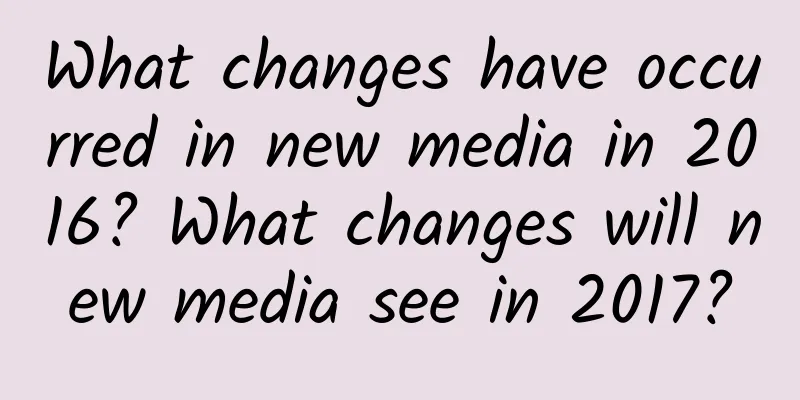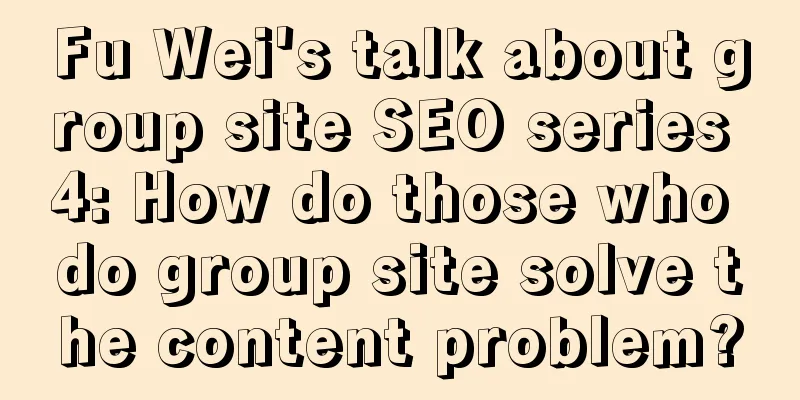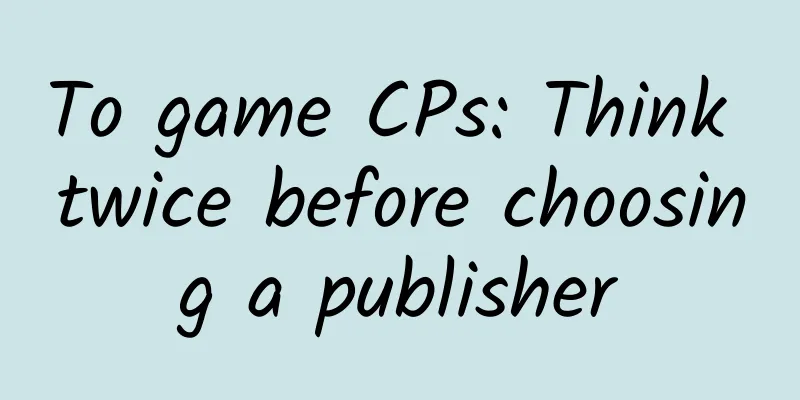What changes have occurred in new media in 2016? What changes will new media see in 2017?

|
Finally, it is the last day of 2016. There are expectations and frustrations, surprises and disappointments, whether it is live broadcast, short video, shared bicycles, A/VR. In the past year, the takeaway brother carried the 020 determination of Meituan and Nuomi in the wind and rain; the busy reporters and web editors are still staying up late to finish their manuscripts and think about the next hot spot; and entrepreneurs are either holding on to "Jack Ma's Bible" or "Roche sentiments", and the curtain of capital and project dance has never been drawn down; new media practitioners are still confused, where is the balance point between quality and effectiveness? So many self-media have cashed out, how can content writing skills and operation strategies appease the uneasy mood of "new media people". These bits and pieces, fragments, and individual life trajectories together constitute the "vast prosperity of the Internet" in 2016. Of course, there are many summaries of 2016, many of which are thought-provoking. But for a new media practitioner, the "big trend" is too far away from us after all. We are more like children holding a magnifying glass to look for shells on the beach, looking for industry hot spots, user pain points, and our own high points from a more micro level. I don’t know if I am the first person to write a summary of a “new media person”, but in addition to holding high the banner of industry forecasts and macro data, I would like to review this year’s work in new media from an “individual” perspective. Whenever we look back, there is always a thread, and for individuals, Internet celebrity is an entry point. If I have to add a modifier in front of Internet celebrity, I think it is "post-individual explosion." Individual outbreak I started to get involved in new media in 2010, when forums were still popular and Xici was still around. The stubborn client insisted on posting his posters on 100 forums and asked us to send 5,000 water armies. The moderators and some small and medium-sized webmasters could still get rich profits. But they were like the staff of a county magistrate, with names and characteristics, but always relying on the diversion of comprehensive websites and hiding behind the scenes. At this time, Weibo and WeChat were already very popular. There were four strategies for new media promotion on these two platforms. On Weibo, in addition to industry opinion leaders, grassroots accounts such as Liu Jishou, Xiaomajia, and Tiancai Xiaoxiongma (later called Internet celebrities) have become popular, but their quotations have not yet exceeded 10,000 yuan. On the one hand, brand owners hope to hear industry KOLs praise their products. Directly posting copy and speculating on the factions of these KOLs have become a compulsory course for new media practitioners; on the other hand, brand owners are not satisfied with self-entertainment and always hope to continue to praise their products from the perspective of some third-party grassroots, as if this is more approachable, and it is also good to get psychological evidence that the public thinks their products are good when reporting. But in fact, grassroots cannot represent the public. In the era when sponsors only seek novelty, this strategy is just right. At that time, the pattern of WeChat public accounts was just beginning to take shape, and most of the account owners who enjoyed the first-mover bonus were not very clear about how to realize traffic monetization. The channel strategy simply relied on self-media commissioned articles and individual large accounts. However, like Weibo, the communication effect of this kind was all TO Party A, and the public received very little information. After several years of evolution, Douban came and went, while Zhihu, news clients, A/B Station, Meipai, and Miaopai kept rotating in the quotation sheets of brand marketing agencies. Wherever there is traffic, there will be marketing. What changes is always the platform, and what remains unchanged is the floating quotation. When we were tired of writing the three-stage communication strategy of "warm-up - outbreak - sublimation", 2016 finally ushered in an individual explosion in new media communication. Papi Jiang was the first to be affected, and her video series “Male Survival Rules” quickly became the focus of communication. Later, Fu Yuanhui, Xue Zhiqian, Wang Nima, Ai Kelili and others (in no particular order) all seized the opportunity of short videos and live broadcasts and became unstoppable. In essence, these are all transfers of commodity value, from physical objects to virtual videos, and prices always follow the law that socially necessary labor time determines value. Under the influence of market leverage, prices may be inflated or fall to the bottom. However, our attention is also an economic factor. When the labor products (videos) of these Internet celebrities successfully match our attention, the arrival of the content economy becomes inevitable, and the individuals who carry it also become the source of the explosion. This brings about two changes in new media communication: changes in channels and changes in content. Needless to say, live streaming has become a standard feature of the platform, and the price of video influencers has risen sharply. For the ghost video UP hosts of Station A and Station B, and the grassroots influencers of Miaopai and Kuaishou, it is normal to have a six-digit production and delivery fee for a single video. Not to mention the high-quality video production teams such as Yitiao, Ergeng, and Rishiji. Channels have opened up new gaps, and the value of marketing has been re-emphasized. In the past, we emphasized the number of reposts, comments, and likes on Weibo and the number of readers on WeChat. This is reflected in the time, playback volume, and product purchase conversion of advertising placements on new channels. Of course, "original posts" similar to those in popular online dramas have also become one of the pioneering soft placements under the new channels. I haven't found the specific data, but the conversion rate of in-video ads calculated by PointRoll in 2013 was only 0.62%. From what I know, a certain party A has verbally revealed that the conversion rate of short videos has reached more than 15%. Since there is no clue in the relevant data report, the authenticity cannot be verified. But at least it reflects the trend of short video advertising placement being popular. This also reflects another change - the change in content. The simple opening and closing logos and the advertising model of oral broadcasts in the film are outdated. Video owners and sponsors have long reached a default two-way selection consensus, including: the attributes of the video owner's fans, the form of advertising placement, and the demand for results. Last year's "Never Expected" and "Baozou Big Event" series both had very good product placement forms, either hard or soft, but none of them were forms that fans disliked (for forms that fans disliked, you can refer to the product placement of Shuhua Milk in Transformers). Until now, with live broadcasts and short videos, the real form of advertising may just be a joke or a gag, and users selectively accept the product subtly (at least I watched Akelili’s video so superficially and bought a lipstick). Channels focus on brand value and product conversion, and content creators have long stepped onto the stage, except for advertising as a warm boudoir to please sponsors. They make fun of themselves, mingle with fans, say the opinions we almost say, and complain about things we dare not say publicly. We also pretend and enjoy the spiritual experience they bring us. Regardless of the form, in 2016, with Li Jiaoshou joining Baidu and Luo Yonghao who is about to give a lecture, the individual outbreaks are unstoppable. The transformation of new media practitioners Phenomenal things are always disassembled and analyzed, leading to macro-forecasts and summaries of the industry. As I said at the beginning of this article, new media practitioners are not old captains who use telescopes to observe the ocean of the industry. They are more like children who use magnifying glasses to look for shells on the beach. What kind of thinking a hot topic triggers, what kind of story is behind a good joke, based on reality, inferring human nature, putting oneself in others' shoes, and feeling the joys, sorrows, anger and happiness in the accounts operated by users, this may be the correct attitude of a new media practitioner. However, in this "golden age" of individual explosion in 2016, the coming 2017, new media practitioners should also usher in their own transformation. The pioneers of new media operations attributed new media operations to three parts: content operations, user operations, and event operations. I agree with this. But I don't like to follow the solidified thinking. The mastery of these three skills by new media practitioners is like washing vegetables, cutting vegetables, and cooking. There can only be an improvement in "skills". And I think the transformation of new media practitioners in the future will focus more on the "skills" level, namely: transformation of thinking, learning ability, and communication skills. Change of thinking: As new media incorporates more and more content and becomes more and more relevant to products, new media practitioners are no longer simple content editors, they should approach operations more from a product perspective. Just as good product design solves the fundamental problems of users, new media operations should also incorporate product design thinking to fundamentally discover the problems that users need to solve. Fans are not just numbers that grow in the background, but rather flesh-and-blood individuals. What are their fundamental problems? Do they use your account as an object of emotional appeal? Or as a concentration camp for product complaints? After removing these superficial phenomena, what are their psychological motivations for paying attention to you? This requires the improvement of overall thinking. Transformation of learning ability: The new media industry is an industry that requires timely recharging. If you don’t learn new things in time, you will fall behind in less than 2 days. When you are still talking about Mi Meng, they have already been talking about Papi. In the past, the only learning channels were Weibo and WeChat, which were one-sided. How can we objectively view the domestic marketing environment and good ideas? From the perspective of channels, there are many things worth learning from abroad. Twitter, Facebook, and YouTube are all hotbeds for mining creativity. In terms of ability, summarizing, analyzing, and digesting should become essential qualities. Communication skills: Some people think that as long as the content is good, it doesn’t matter whether they communicate with others or not. But in fact, humans are social animals, and good communication brings good value transfer. In addition to communicating with users on the platform, you also represent the brand's image as an individual. Your likes and replies in Moments will also reflect the brand's external philosophy and quality of talent selection. Of course, in addition to these three changes, good new media operations not only have good creativity and the ability to output content. In general, they also need to seek to solve the right problems and adopt appropriate methods that meet user needs and capabilities. This is user-oriented thinking, and it also requires us to understand the fundamental problems of users. In a sense, new media practitioners are explorers of phenomena, and we should continue to maintain this spirit of exploration. As a winner of Toutiao's Qingyun Plan and Baijiahao's Bai+ Plan, the 2019 Baidu Digital Author of the Year, the Baijiahao's Most Popular Author in the Technology Field, the 2019 Sogou Technology and Culture Author, and the 2021 Baijiahao Quarterly Influential Creator, he has won many awards, including the 2013 Sohu Best Industry Media Person, the 2015 China New Media Entrepreneurship Competition Beijing Third Place, the 2015 Guangmang Experience Award, the 2015 China New Media Entrepreneurship Competition Finals Third Place, and the 2018 Baidu Dynamic Annual Powerful Celebrity. |
<<: South Korea plans to put self-driving cars on the road by 2020, ahead of Japan
>>: Jack Ma's automotive ambition: buying, selling, washing and repairing cars
Recommend
National treasures in museums should not be illuminated with “ordinary light”
Museum painting and calligraphy lighting The Admo...
Why Blue Foods Suppress Your Appetite
Speaking of cola chicken wings, I believe it is a...
29 pictures to teach you how to improve APP conversion rate!
This reading note will be divided into several se...
Monetization tips for educational short video hosts!
A name that seems to be full of clickbait titles....
How to solve some problems encountered in Xcode9 and iOS 11
1. After upgrading to Xcode9, create a new projec...
Ideas and practical techniques for optimizing landing pages in the home improvement industry
You invested in two landing pages and the results...
How to screen high-quality APP promotion channels?
With the rapid development of the mobile Internet...
How to have a complete set of activity operation planning ideas!
As a novice in operations, how can you learn from...
The cost of replacing batteries is as high as 1.6 trillion yuan. It is time to test China's first batch of electric car users.
Electric vehicles are the mainstream trend in Chi...
Where is the WeChat Video Account? How to apply for WeChat Video Account?
There have been some updates about WeChat Video A...
How to play the Toutiao project, from account registration, material acquisition to video production and release
How to play the Toutiao account project, from acc...
Does your stomach really get bigger the more you eat? Does dieting shrink it? The truth is...
Myth: "The more you eat, the bigger your sto...
As 2023 is coming to an end, let’s review ten major environmental events!
2023 is coming to an end and the new year is abou...
How much does it cost to join the Jiaozuo Education Mini Program?
How much does it cost to join the Jiaozuo educati...
How to increase the popularity of Douyin live broadcast room?
Short video content and live streaming have alway...









